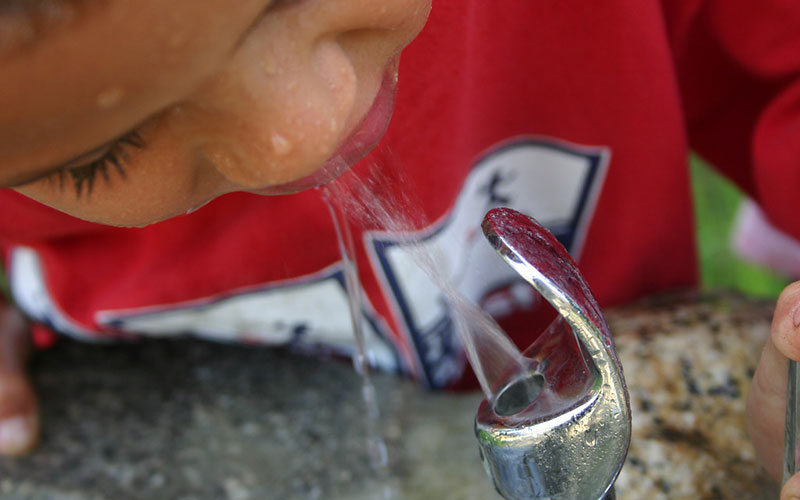
Proactively testing is the only way to know for sure if the fountains our kids drink from in schools across Vermont are safe. Photo: Jeff Taylor
A version of this blog was initially published by VTDigger.
As the mom of two small children, I worry . . . a lot. But there is one thing I shouldn’t have to worry about: lead in drinking water at school. Unfortunately, lead is often lurking in the fountains and faucets our kids drink from every day at schools across Vermont. And right now, there is no mandate for schools to test for it. Proactively removing lead fixtures and plumbing and testing for lead in drinking water is the only way we can know for sure that our schools and childcare centers are providing safe water.
No Level of Lead is Safe
There is widespread consensus among the medical community and other public health experts that no level of lead is safe, especially for children. Lead is a potent neurotoxin, and exposure to even very low levels can result in lifelong, irreversible consequences. Children are especially susceptible to lead poisoning, and lead exposure can cause attention disorders, loss of IQ, and delayed learning, as well as behavioral, kidney, and hearing problems. The Vermont Department of Health has set a health advisory of 1 part per billion (ppb) for lead in drinking water.
Due to a gap in our safe drinking water laws, most schools are not required to test for lead. But a recent pilot program revealed that every single one of 16 schools tested had at least one drinking or cooking tap with lead concentrations above the Vermont health advisory. Five of the schools had levels 15 times the health advisory. This is just the tip of the iceberg: many of our schools are located in older buildings that are more likely to have water fountains, fixtures, or other plumbing that contain lead.
We can no longer ignore the fact that our schools and childcare facilities – the very places where our children gather to grown and learn – may not have safe drinking water.
Governor Scott recently proposed an important first step: state-funded mandatory testing for all schools within the next year. The governor must follow through on this promise, and lawmakers must put strong laws on the books for schools and childcare facilities that require action to remove lead in fixtures and plumbing, annual testing, shutting off and cleaning up taps where lead exceeds 1 ppb, notification to parents of all test results, and public access to test results.
Lead Testing Alone is Not Sufficient – We Must Get the Lead Out
Where there is lead, there is a risk of lead poisoning. Relying on testing alone is not enough, because test results can vary over time due to the nature of corrosion causing the lead exposure. What this means is that testing may not tell us the full extent of the risk. Our kids shouldn’t have to play a dangerous game of chance every time they drink from a school fountain.
Every Vermont school can take low-cost, yet effective steps to reduce the risk to our children. They can start by installing appropriate filters on all drinking water sources. As a permanent solution, they need to proactively replace fountains fixtures, and pipes that contain lead. In the pilot program referenced above, many of these fixes were inexpensive – and far less costly than the public health costs and lifelong damage associated with lead exposure.
Finally, beyond these fixes lead service lines that connect schools to the water main in the street must also be replaced as soon as possible.
You Can Help Keep Vermont’s Kids Safe
Parents and community members play a critical role in solving the preventable problem of lead poisoning in our schools. Ask your local school superintendent to see lead testing results. If the water has not been tested, request that it be done immediately and for results to be made public. If lead levels exceed 1 ppb from a drinking or cooking tap, demand that your school take action to eliminate this lead hazard and work with the school to enact a plan to remove lead pipes and tainted fountains and fixtures.
For too long we have taken the safety of school drinking water for granted while our children have suffered the consequences. We now have an opportunity to work together to right this wrong and make sure every child has safe drinking water at school. No more excuses. Let’s get to work.



